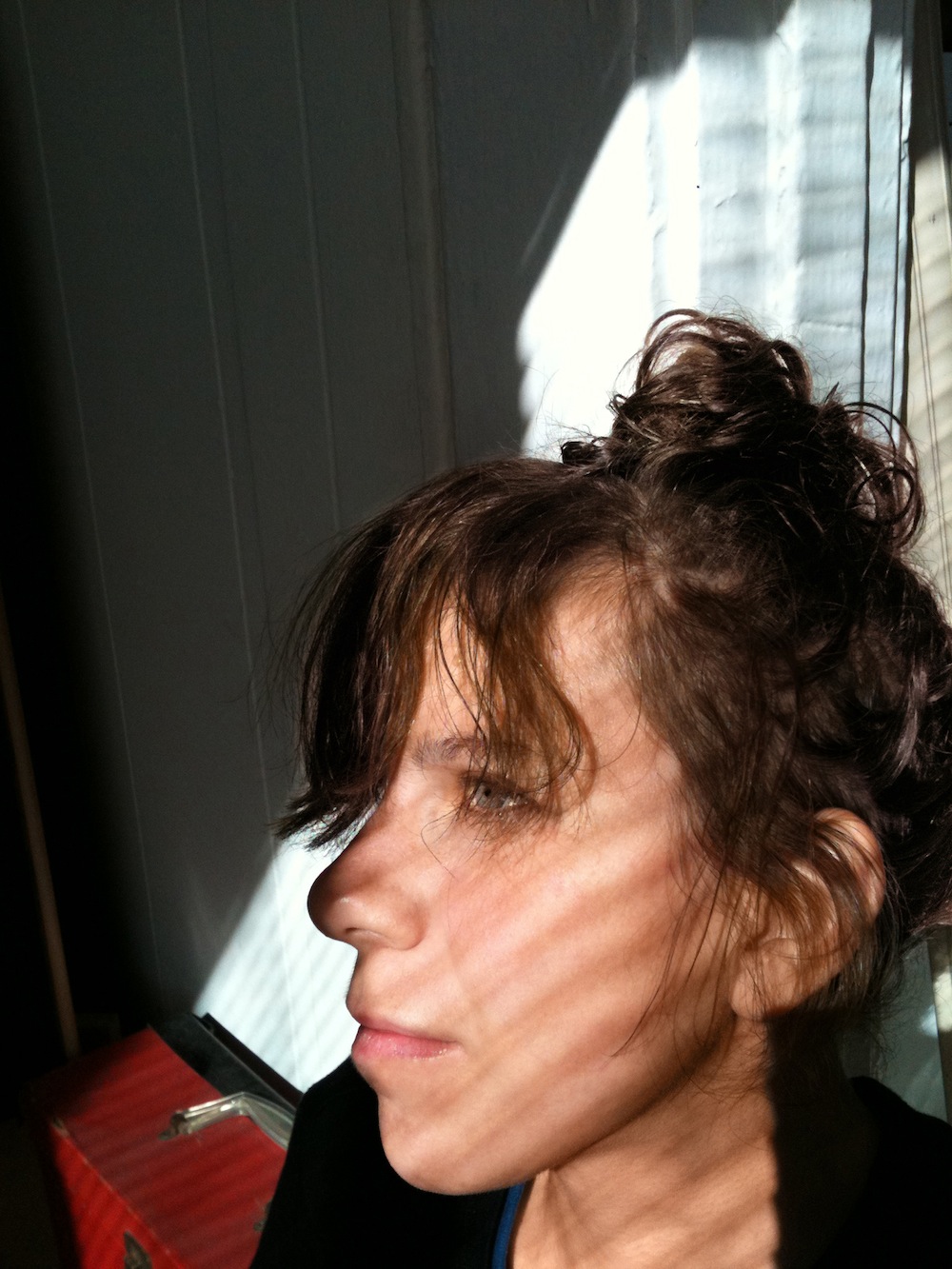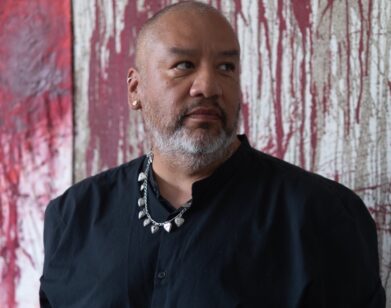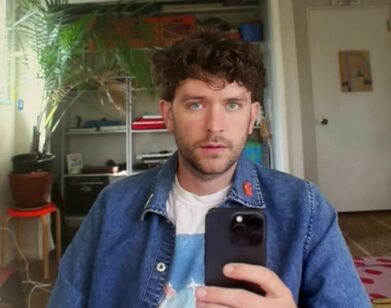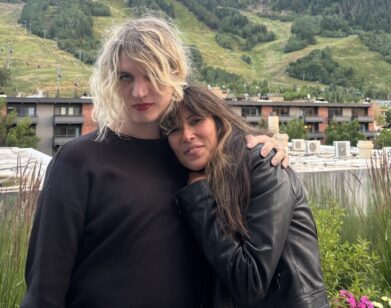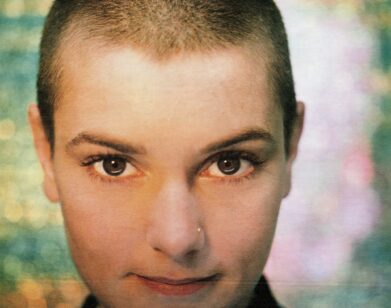In the Golden Room
Samara Golden is a rising star. She has a second solo exhibition upcoming at Night Gallery in Los Angeles; and this past year alone, she’s had a solo booth at Frieze in New York; a two-person, collaborative exhibition with artist and Night Gallery propietor Davida Nemeroff at Various Small Fires; as well as group shows at Rachel Uffner, Marlborough Chelsea, and On Stellar Rays. Though Golden is not originally from L.A., she is picking up where many of the native Los Angeles artists—like Mike Kelley, Chris Burden, and Paul McCarthy—have left off.
Golden’s installations are heavy; they resonate with the past, present, and future. Her distinctive artistic world sucks you in like a clip from pop culture, consumes you like a mesmerizing spell, and spits you out like a ball of fire. Installations might include video collages using photos and self-created mantras, overloads of printed images from Amazon and EBay of desirable products, silver insulation foam from which Golden builds structures, and fabrics dipped in Elmer’s glue to cover the walls. Secondhand furniture, home bedding, sheets, and fabrics adorn the walls and often make up the details, a cacophony of information. It is jarring, leaving audiences at times shaken up—but better off than before, too; more likely to interrogate their own experience. Golden tells stories the way Led Zeppelin, The Doors, and the Eagles did—her soul feels rooted in California, but her experiences feel otherworldly.
We exchanged thoughts with Golden about the sixth dimension, music, and time travel from across the country, while she was installing The Fireplace, a large scale, full-room installation for the group exhibition “Room to Live,“ at the Museum of Contemporary Art, Los Angeles, her first musem show.
VERA NEYKOV: Where are you from originally?
SAMARA GOLDEN: Ann Arbor, Michigan, but I lived Minneapolis, San Francisco, Chicago, Austin, and Portland; and then New York for the past 12 years, before moving to L.A..
NEYKOV: How did you end up in L.A.?
GOLDEN: I have always been really inspired by film, when I was growing up in the ’70s and ’80s it seemed like every TV show, movie, and film was shot in L.A. I wanted to see the fantasy, to see the cinematic possibility, and to be in a more expansive place.
NEYKOV: The title of the exhibition at MoCA refers to spaces, and your installation included a piece called The Fireplace. What is this piece about?
GOLDEN: The Fireplace is a self destructive and self-critical force. The piece is about me being overwhelmed; being an insomniac, plaguing oneself with thoughts, and also having migraines. It’s a shadow. It’s meant to be a location in between the dimensions—it’s a frozen moment, and a place for thinking. It’s a prison of the mind, and is also a peaceful place. I like the idea of the sixth dimension to try to explain what I’m thinking about. We all accept the fourth dimension as being linear time, and the fifth dimension is sometimes described as being time travel—i.e., you can visit the past or the future. But to me, the sixth dimension is the idea that there are a million possible pasts, presents, and futures all happening simultaneously in one location—i.e., that one physical location can be the top of a skyscraper, a campfire in the forest, a swimming pool in the rain, and an infinite number of other places, all at the same time and all in the same physical place.
NEYKOV: How do you incorporate that sixth dimension in your work? I remember we had talked a lot about how you think about the place where you are, everything that happened there, and everything that could be happening there at any moment. Are your installations new realities for that location, or just a transport of the place where they were originally thought of? Do they undulate between the two?
GOLDEN: I like to imagine that the physical place that you inhabit is just an anchor. If you are a lucky person, you have the ability to be “in the moment” and enjoy one reality, but I feel like there is more going on than that. If you are an intuitive and sensitive person, I think that you can feel the other dimensions, even if it is just you transporting yourself to other places in your thoughts. There is science, psychology, and spirituality that explores and writes about this phenomenon. I’m not any sort of a scholar, but I do find the ideas inspiring. But to answer your question, I think the installations are both a new reality, and convocation of remnants from the past.
NEYKOV: There is a song that plays throughout the film in The Fireplace. Why do you include the musical component?
GOLDEN: I like to try and create an emotional space—I like the idea that emotions are like weather that passes over you, so I try to make sound that washes over the space. For The Fireplace, in one part, I am singing along to a sad song, and every once in a while, another track of saxophones and heavy metal being played backwards is disrupting the song and confusing the feelings.
NEYKOV: Do you think about music often? What kind?
GOLDEN: I always wanted to be a musician and have always loved the way music and film can create a powerful emotional space. I feel that it’s harder to attain that level of intensity with visual art, but I’m attracted to the idea of creating a suspended powerful emotional space that a person can walk into. I believe in using all of the tools that you can get access to to manifest your vision. For me, I am trying to use video, sound, sculpture, painting, light, etc., to materialize my ideas.
NEYKOV: When you are installing these rooms and works, is it important that people enter them and live within them, or do you want them to be viewed from the outside?
GOLDEN: It is important that people come into the rooms, and that they feel them. I like the idea of there being “other” presences in the room, almost like ghosts, aberrations, or mirages. Sometimes I put subliminal messages into the work, other times dark silhouettes appear in the video footage, they look like shadows coming from nowhere. Hopefully there is a feeling that there are other things in the room outside of what you can literally see… this is something that takes time to manifest, it can’t really be faked. It has to be something that I feel, or something that I notice; it’s an organic process.
NEYKOV: Do their meanings change for you during the process? I know a lot of them take several days of installing, and conceptualizing how they will fit within the space they are intended for. Is the final outcome often the same as you had originally intended it to be?
GOLDEN: The installations are pretty self-reflective. They require a lot of time to build their own momentum. They are often different than I originally intended them to be. I try to address my real feeling at the time of making them. The Fireplace came about partially because I am truly plagued with migraines; I have anxiety and sometimes insomnia. I wanted to create a place for those emotions to locate themselves. The piece has a projection on the wall that is made of every photo I’ve taken in the last year, each playing at a fraction of a second. That is what I call the “migraine projection.”
NEYKOV: Are your installations and individual works separate or do you think of them as one, a whole part of a story?
GOLDEN: I think of them as elements of a whole—it is a long story, made up of small poems.
NEYKOV : Do these installations and works then become a cathartic experience for you? Do you feel you have overcome maybe even just a tiny aspect of the emotions that you are battling or working through?
GOLDEN: I guess that I hate the word cathartic, it is true that everything I do is very personal; however, I view my projects more as materialization problems…. or even as math problems. They are like very long story problems that can only be solved by materializing the elements, and having them engage each other in very specific ways that then create a locked-in “answer.” I feel that in order to make something happen in this way, one has to put their full self, and psyche, into it. The installations are full of my thoughts, interests, obsessions, and fears, but those elements are tools that I use to get to the larger whole. But to answer your question more literally, in some ways I see my installations as exorcisms.
SAMARA GOLDEN’S THE FIREPLACE IS FEATURED IN MOCA’S “ROOM TO LIVE,” ON VIEW THROUGH JANUARY 12, 2014.

